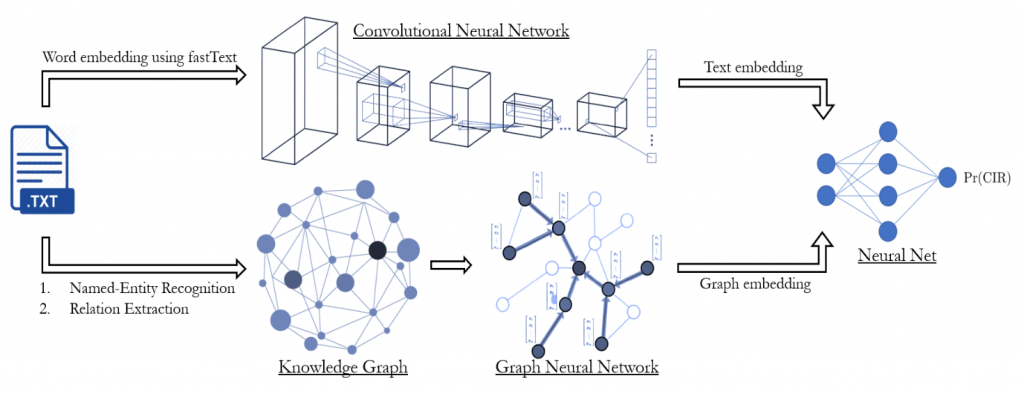Synthesis Analysis Motor
Secure your Research Tax Credit declarations by comparing your technical justification with our CIR analysis platform. Its AI-based model, trained on hundreds of real CIR project files, assesses the technical nature of your projects, as well as the quality of the drafting in line with the best practices recommended by the French Ministry of Research. It also assesses the consistency of the amount of expenditure declared in relation to the project's technical justification.
Our platform analyzes your projects securely and encrypted to guarantee confidentiality.
- MYTEAM develops in-house products based on Artificial Intelligence to meet the needs of this booming market. Our experts, in collaboration with specialists from our industrial partners, teach their skills to the computer, which gradually becomes a new work force. The SAM (Synthesis Analysis Motor) web application and its "CIR Analyzer" module is one of the platforms using this technology that we have successfully developed.
This platform's mission is to evaluate the research projects of French companies in order to estimate the probability that the technical justification will be in line with the recommendations of the Ministry of Research and consistent with the declared budget, thanks to an NLP approach. At the same time, it could be used to support young entrepreneurs during the development of their start-ups. By combining multiple tools and methods of Natural Language Processing (NLP), our experts have succeeded in developing an innovative solution capable of tracking down and exploiting key information in technical scientific documents relating to state-of-the-art technologies.
Below is a summary of our work from our paper published at the 26th International Conference on Knowledge-Based and Intelligent Information & Engineering Systems (KES 2022) .
1.data collection
In order to qualify for the CIR, French companies are required to draw up structured, exhaustive summaries detailing their research methodology and results, taking into account existing scientific knowledge and barriers. This project was carried out with a partner consultancy firm which, with over eight years' activity and experience, has a wide range of such technical dossiers, covering a variety of subjects and disciplines, and representative of the French research ecosystem.
2.pipeline
The CIR Analyzer algorithm is based on an innovative system comprising two parallel Deep Learning modules (fig. 1), enabling finer analysis of documents and better exploitation of technical and key details. Each of these modules collects an abstract representation of the summaries to enable Artificial Intelligence to better interpret them.
- The first module is based on Convolutional Neural Networks (CNNs) using vector representations of synthesis terms obtained with the fastText algorithm to exploit the sequential structure of the text and extract the most salient terms.
- The second module seeks to exploit the intrinsic structure of the text and the relationships between terms and concepts involved. To do this, it uses an unsupervised KnowledgeGraph and a graph neural network.
The two modules are then merged to create a classifier that determines the project's search level.

Synthesis Analysis Motor
Secure your Research Tax Credit declarations by comparing your technical justification with our CIR analysis platform. Its AI-based model, trained on hundreds of real CIR project files, assesses the technical nature of your projects, as well as the quality of the drafting in line with the best practices recommended by the French Ministry of Research. It also assesses the consistency of the amount of expenditure declared in relation to the project's technical justification.
Our platform analyzes your projects securely and encrypted to guarantee confidentiality.
MYTEAM develops in-house products based on Artificial Intelligence to meet the needs of this booming market. Our experts, in collaboration with specialists from our industrial partners, teach their skills to the computer, which gradually becomes a new work force. The SAM (Synthesis Analysis Motor) web application and its "CIR Analyzer" module is one of the platforms using this technology that we have successfully developed.
This platform's mission is to evaluate the research projects of French companies in order to estimate the probability that the technical justification will be in line with the recommendations of the Ministry of Research and consistent with the declared budget, thanks to an NLP approach. At the same time, it could be used to support young entrepreneurs during the development of their start-ups. By combining multiple tools and methods of Natural Language Processing (NLP), our experts have succeeded in developing an innovative solution capable of tracking down and exploiting key information in technical scientific documents relating to state-of-the-art technologies.
Below is a summary of our work from our paper published at the 26th International Conference on Knowledge-Based and Intelligent Information & Engineering Systems (KES 2022) .
1.data collection
In order to qualify for the CIR, French companies are required to draw up structured, exhaustive summaries detailing their research methodology and results, taking into account existing scientific knowledge and barriers. This project was carried out with a partner consultancy firm which, with over eight years' activity and experience, has a wide range of such technical dossiers, covering a variety of subjects and disciplines, and representative of the French research ecosystem.
2.pipeline
The CIR Analyzer algorithm is based on an innovative system comprising two parallel Deep Learning modules (fig. 1), enabling finer analysis of documents and better exploitation of technical and key details. Each of these modules collects an abstract representation of the summaries to enable Artificial Intelligence to better interpret them.
- The first module is based on Convolutional Neural Networks (CNNs) using vector representations of synthesis terms obtained with the fastText algorithm to exploit the sequential structure of the text and extract the most salient terms.
- The second module seeks to exploit the intrinsic structure of the text and the relationships between terms and concepts involved. To do this, it uses an unsupervised KnowledgeGraph and a graph neural network.
The two modules are then merged to create a classifier that determines the project's search level.

